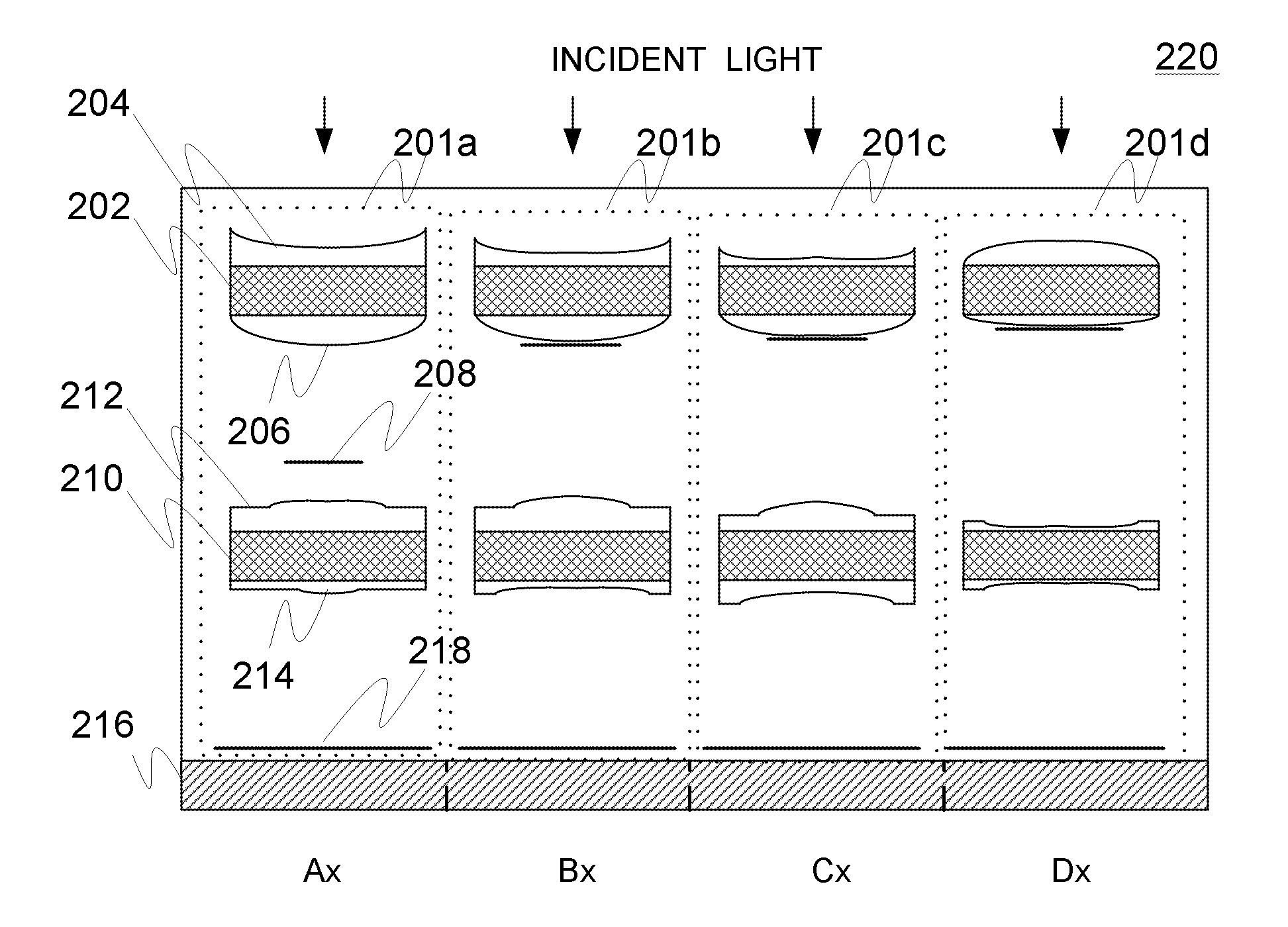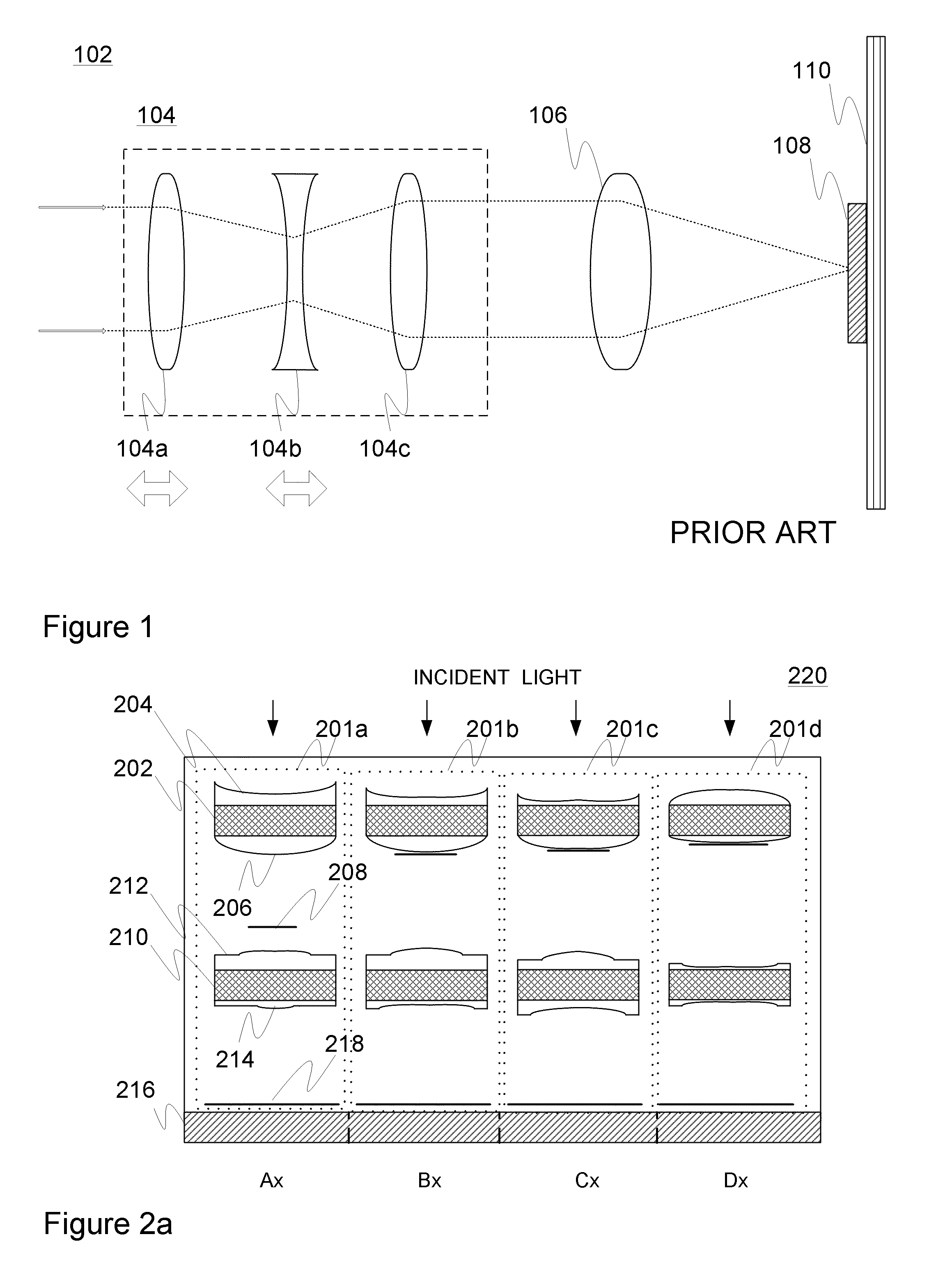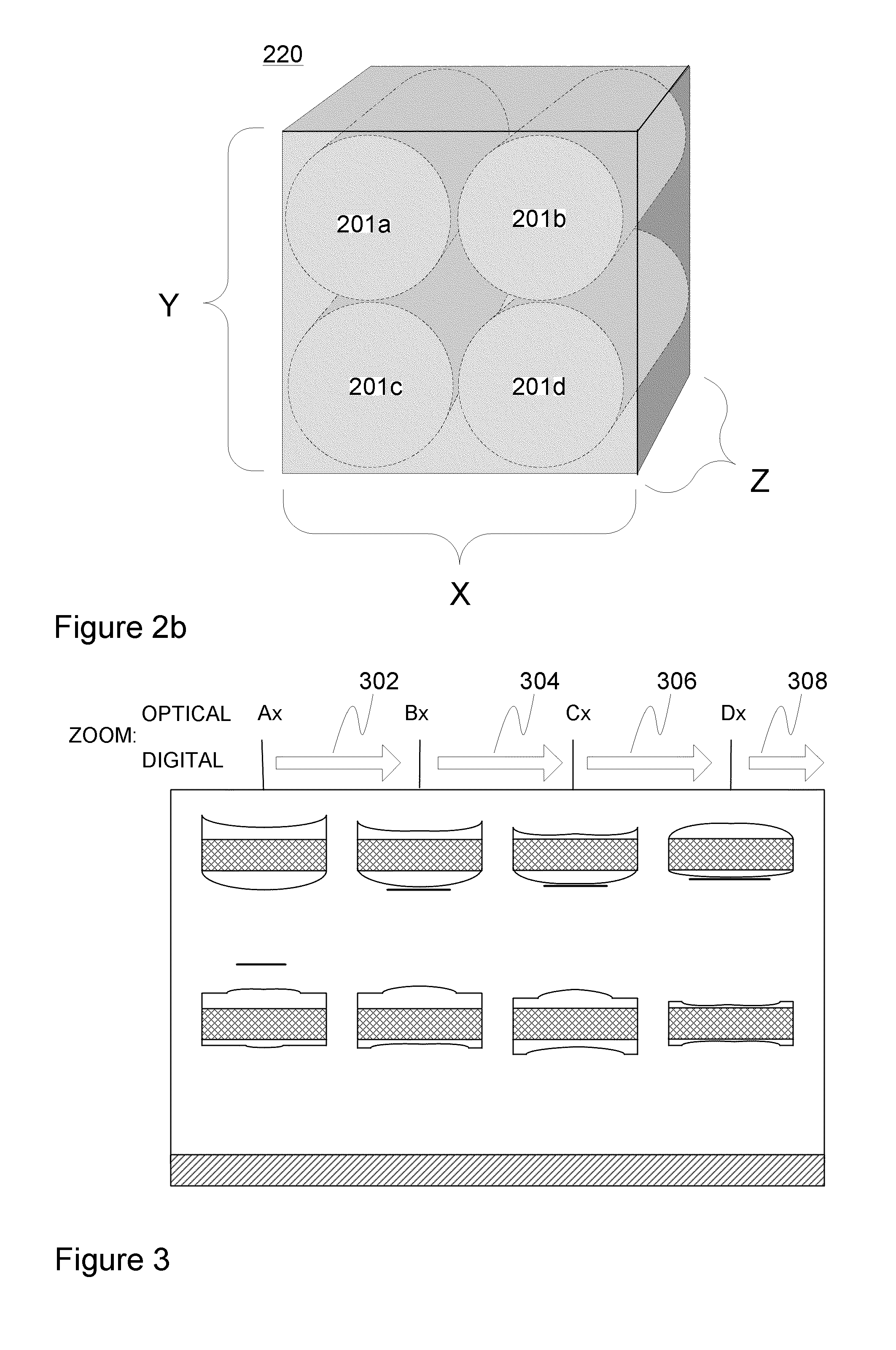Zoom camera arrangement comprising multiple sub-cameras
a camera and sub-camera technology, applied in the field of optical and electronic devices, can solve the problems of increasing the size and price of the camera arrangement, increasing the complexity of the manufacturing process, and increasing the importance of manufacturing costs
- Summary
- Abstract
- Description
- Claims
- Application Information
AI Technical Summary
Benefits of technology
Problems solved by technology
Method used
Image
Examples
Embodiment Construction
[0030]FIG. 1 was already contemplated hereinbefore in connection with the review of the background of the invention.
[0031]FIG. 2a illustrates one embodiment 220 of camera arrangement in accordance with the present invention. It shall be first noted that the illustrated elements are not necessarily drawn in scale, unless remarks to assume the contrary are explicitly given. In this particular example the arrangement comprises four sub-camera entities 201a, 201b, 201c, and 201d in order to provide four different zoom steps, or “factors”, Ax, Bx, Cx, and Dx, respectively, but in other embodiments other number, e.g. 2, 3, 5, or more, sub-camera entities may be applied. The sub-camera entities can be functionally considered as “lens tubes” or “barrels” that may be deposited adjacent to each other e.g. in matrix or row form. Advantageously, the placement of sub-cameras may be optimized co-operatively with the sensor area(s) such that the size of surplus, i.e. unused, sensor area(s) is mini...
PUM
 Login to View More
Login to View More Abstract
Description
Claims
Application Information
 Login to View More
Login to View More - R&D
- Intellectual Property
- Life Sciences
- Materials
- Tech Scout
- Unparalleled Data Quality
- Higher Quality Content
- 60% Fewer Hallucinations
Browse by: Latest US Patents, China's latest patents, Technical Efficacy Thesaurus, Application Domain, Technology Topic, Popular Technical Reports.
© 2025 PatSnap. All rights reserved.Legal|Privacy policy|Modern Slavery Act Transparency Statement|Sitemap|About US| Contact US: help@patsnap.com



